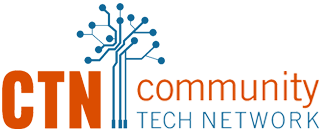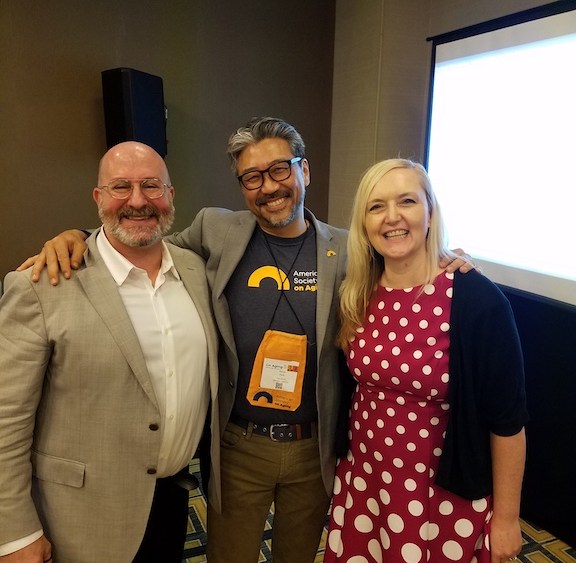Together with leaders from Older Adults Technology Services (OATS) and Front Porch, CTN’s executive director Kami Griffiths participated in a panel last month at the American Society on Aging conference in New Orleans.
Their session, “Digital Inclusion and Older Adults: A Survey of Research, Best Practices, and Opportunities for Technology Engagement,” shared research studies outlining the challenges of a digitally-disconnected, aging population. They discussed case studies of digital inclusion pilot projects targeting senior affordable housing. These projects were designed as a model of scalability for low-income senior housing communities. The presenters shared specific resources that support the replication of digital inclusion. Click to see the ASA 2022 Digital Inclusion presentation (PDF).
Below are highlights from sessions that Kami attended.
“Developing a Replicable, Scalable Model to Address the Digital Divide in Affordable Senior Housing Communities” was presented by Lighthouse for Older Adults. This public-private partnership supports low-income older adults living in affordable housing communities by providing access to internet and telehealth services. The presenters shared aspects of the program involving the distribution of different types of devices and a variety of ways to provide training. Notable was the utilization of resident “Ambassadors” as “super-users.” These residents receive devices prior to training in order to practice and build confidence. Another benefit was using small groups or “pods” that met and helped each other learn. This made the program much more sustainable.
Anne Manby of Vantage Aging presented “Bridging the Digital Divide through Nonprofit Partnerships.” She shared information about their senior workforce development program, which prepared participants for work by providing internet-enabled devices and basic and intermediate digital literacy training. They plan to have 150 graduates by the end of 2022 and found that longer cohorts were better as participants wanted to continue learning. Digital Navigators were key to their success, with each Navigator helping eight learners remotely. They also access the Occupational Information Network (O*NET), which has 900 occupations listed along with the tech skills that are required for specific jobs.
In the session “Tech-Enabled Villages,” Manuel Acevedo shared the story that inspired him to develop Helpful Village, a tool made specifically for connected communities. Villages are community-based, nonprofit, grassroots organizations formed by a cadre of caring neighbors who want to change the aging model. Helpful Village has the ability to match volunteers through the village’s website.


Comments are closed.